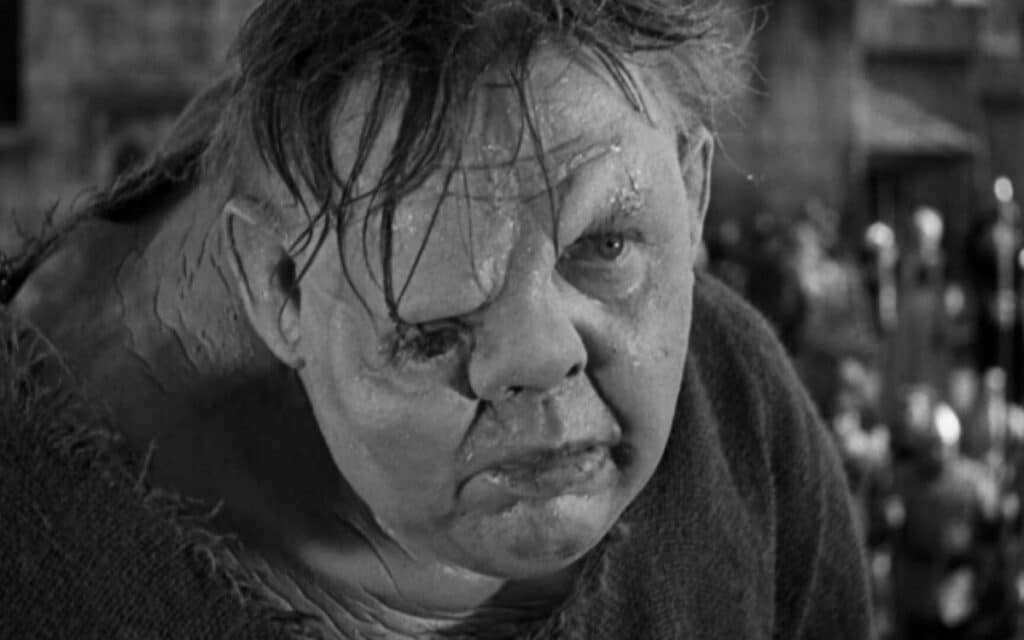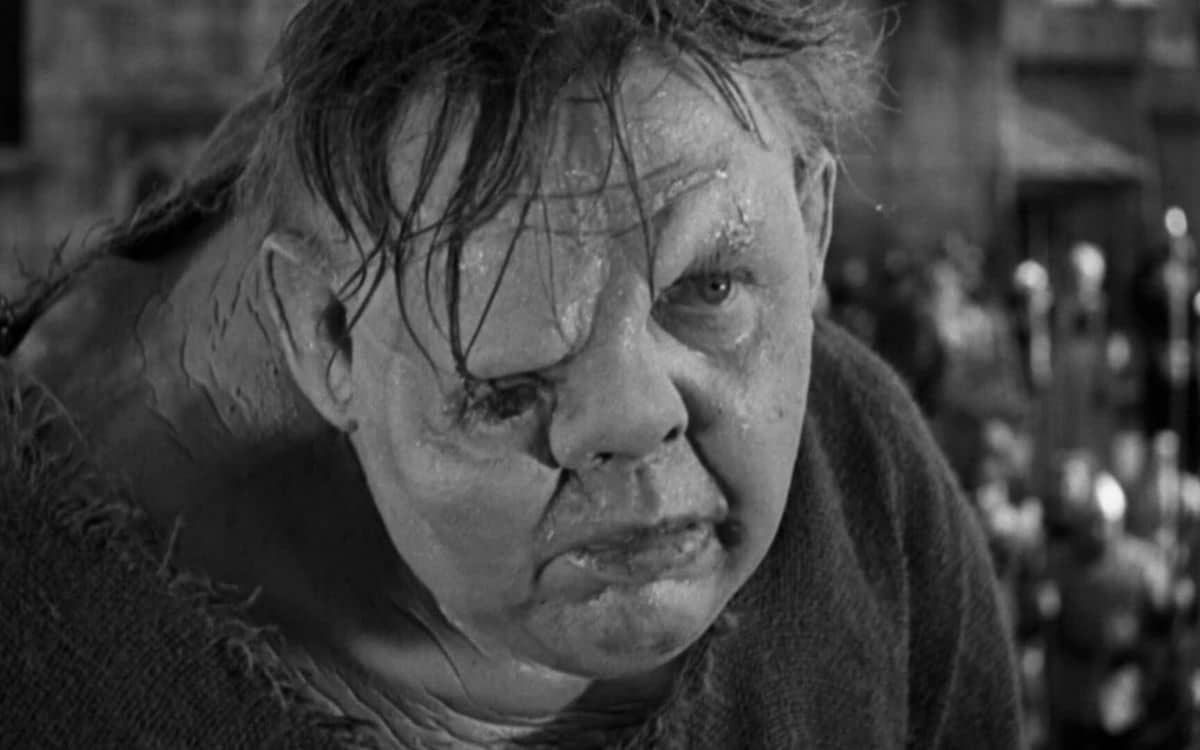The Hunchback of Notre Dame 1939, starring Charles Laughton, is a gothic horror classic of haunting performances and dark drama, writes DAVID SAUNDERSON

TITLE: The Hunchback of Notre Dame
RELEASED: 1939
CAST: Charles Laughton, Maureen O’Hara, Cedric Hardwicke
DIRECTOR: William Dieterle
Review of The Hunchback of Notre Dame 1939
Victor Hugo’s epic tale of love, deformity, and injustice has never quite been a straightforward horror film.
Yet ever since Lon Chaney Sr. donned the iconic hump and grotesque makeup in the 1923 silent version, The Hunchback of Notre Dame has been tied to the horror genre.
The story of Quasimodo, the tragic bell ringer of Paris’ Notre Dame Cathedral, taps into the same primal fears and human suffering as Frankenstein’s Monster or Joseph Merrick, the Elephant Man.
These are misunderstood souls whose physical forms inspire fear and revulsion, yet who long for nothing more than acceptance and companionship.
In the 1939 version, directed by William Dieterle, Quasimodo is brought to life by Charles Laughton in one of the greatest performances of his career.
Laughton’s Quasimodo is not merely a creature of pity or horror; he is a fully fleshed-out character, offering an unexpected depth and humanity to the role.
Behind the hideous exterior is a sensitive, almost childlike soul who finds solace in the company of the beautiful Esmeralda (Maureen O’Hara). It’s a portrayal that evokes sadness even as it impresses with its complexity.
The film’s gothic atmosphere is established early on, with the towering Notre Dame Cathedral casting ominous shadows over a city teeming with cruelty and corruption.
The cathedral itself becomes a character — a gothic giant looming over Paris with its dark recesses and echoing bells, offering Quasimodo his only sanctuary.
Dieterle plays with light and shadow, creating a world that feels both claustrophobic and cavernous, a fitting backdrop for a story of isolation and longing.
Laughton’s performance is unmatched, but he is not the only one who shines.
Maureen O’Hara, as Esmeralda, is radiant and fiery, a woman of both spirit and compassion who refuses to see Quasimodo as a monster.
Meanwhile, Cedric Hardwicke’s Frollo is a chilling embodiment of fanaticism and hypocrisy, a true villain whose obsession with Esmeralda drives much of the film’s horror.
The direction strikes a careful balance between the intimate and the epic.
The crowd scenes are teeming with life, capturing the chaos and cruelty of medieval Paris. Quieter moments in the bell tower allow Laughton to express the pain and yearning of Quasimodo.
The film’s pacing swings like a pendulum, moving between moments of intense action and quiet reflection.
The makeup and special effects may not be as shocking as Chaney’s 1923 version, but they still pack a punch.
Laughton’s transformation into Quasimodo is a testament to old-school craftsmanship — his hunched back, lopsided face, and uneven gait make him a figure both tragic and terrifying.
The bell tower scenes, with their dizzying heights and dramatic lighting, still hold up today, creating a sense of vertigo and impending doom.
For all its grandeur and spectacle, The Hunchback of Notre Dame is a deeply human film.
It might not fit neatly into the horror genre, but its gothic elements — the towering cathedral, the tormented protagonist, and the cruel, uncaring world around him — make it feel right at home among other horror greats.
It’s a film about the monsters we make of men, the suffering inflicted on the different, and the humanity that can be found even in the most twisted forms.
Disney may have turned it into an animated musical in the 1990s, stripping much of its darkness. But for those who remember watching the 1939 version on a crackling VHS tape, there’s no doubt: this is a gothic horror masterpiece.
Charles Laughton’s Quasimodo remains a haunting figure, forever ringing his bells, forever misunderstood.
Watch it for Laughton’s transformative performance, for the towering presence of Notre Dame, and for the way it captures the monstrous and the human in equal measure.
It’s a classic that deserves its place in the annals of gothic horror, even if it does not always fit the mould.
Tell us your thoughts about The Hunchback of Notre Dame 1939 in the comments section below!


